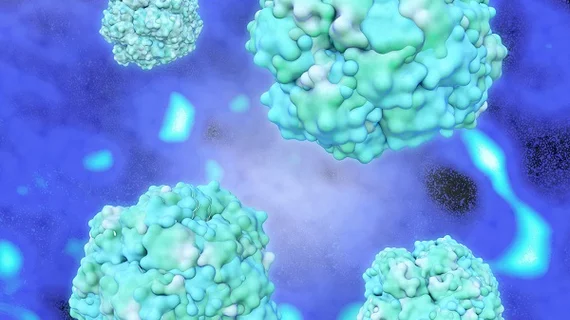New radiotracer that detects prostate cancer recurrence produces 'stunning' results
Researchers have been testing a new radiopharmaceutical that has thus far yielded “stunning” results for detecting prostate cancer recurrence after surgery.
Samer Ezziddin, professor of nuclear medicine and director of the Department of Nuclear Medicine at the Saarland University Medical Center, and his team of researchers have been studying prostate cancer metastases and recurrences by observing the effects of various radiopharmaceuticals administered during PET/CT scans. Most recently, their research has focused on a radiopharmaceutical that contains the isotope zirconium 89 (89Zr).
The radioisotope has a significantly longer half-life compared to gallium-68-labelled PSMA ligands. The half-life for the 68Ga isotope is approximately 68 minutes, which is the window of time radiologists are allotted to try and identify where the tracer has settled and thus where any metastases or local recurrences might have formed.
"In around half the cases we look at, we don't see any abnormalities in a conventional PSMA-PET/CT image," Ezziddin explained.
In contrast, 89Zr does not fully decay for several days after injection, which the experts suggest has led to a significant increase in earlier detection of tumor tissue in their research.
"We examined 20 patients whose conventional PSMA-PET/CT scans were all negative. That is to say, we were unable to find any evidence of metastases or other tumor tissue in the original images. But when we used the zirconium-89-labelled radiotracer, we found early-stage tumors and metastases in all of the patients in our small sample group,” Ezziddin revealed. “The results were stunning.”
These findings indicate the potential for more precise detection of cancerous tissue, which would allow for a targeted radiation therapy approach, the experts noted. Additionally, there is an opportunity for definitive diagnoses in patients whose previous PSMA-PET/CT scans were indeterminate.
“If we have patients who previously had a mildly positive or indeterminate PSMA-PET/CT scan, we can now use the new technique to identify those regions in which higher levels of PSMA were only due to the presence of benign pathologies and thus distinguish them from true prostate cancer aetiologies," explained Ezziddin. “After a few days, the radiotracer is no longer attached to harmless regions but is still bound to the cancer tissue. The accuracy of the imaging results is thus enhanced enormously when the tracer molecule contains zirconium 89 as the radionuclide.”
Of note, the findings of Ezziddin and his team are the results of a small case study and have not yet been peer reviewed.
The detailed research can be viewed in Clinical Nuclear Medicine.
More on PET/CT imaging:
'Pandemic brain': PET/MRI images reveal how COVID's impact is felt by non-infected individuals
Is PET/CT or multiparametric MRI best for detecting prostate cancer? New research offers guidance
F-18 FDG PET/CT highly sensitive for diagnosing cause of fevers with unknown origin

